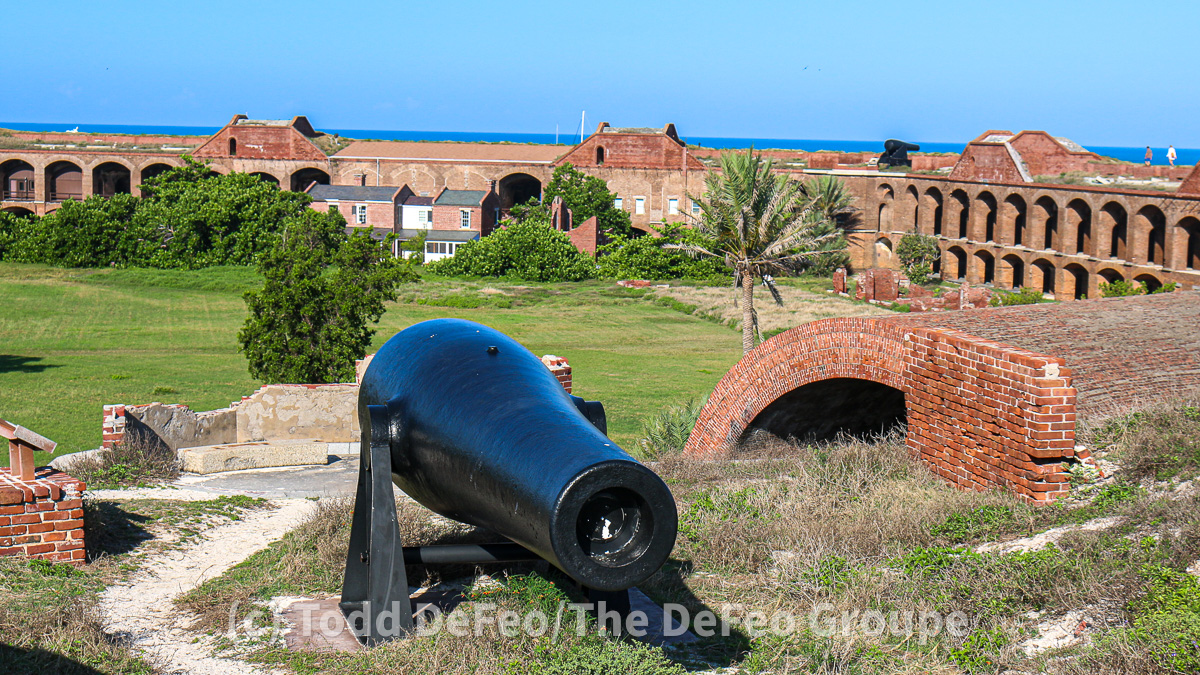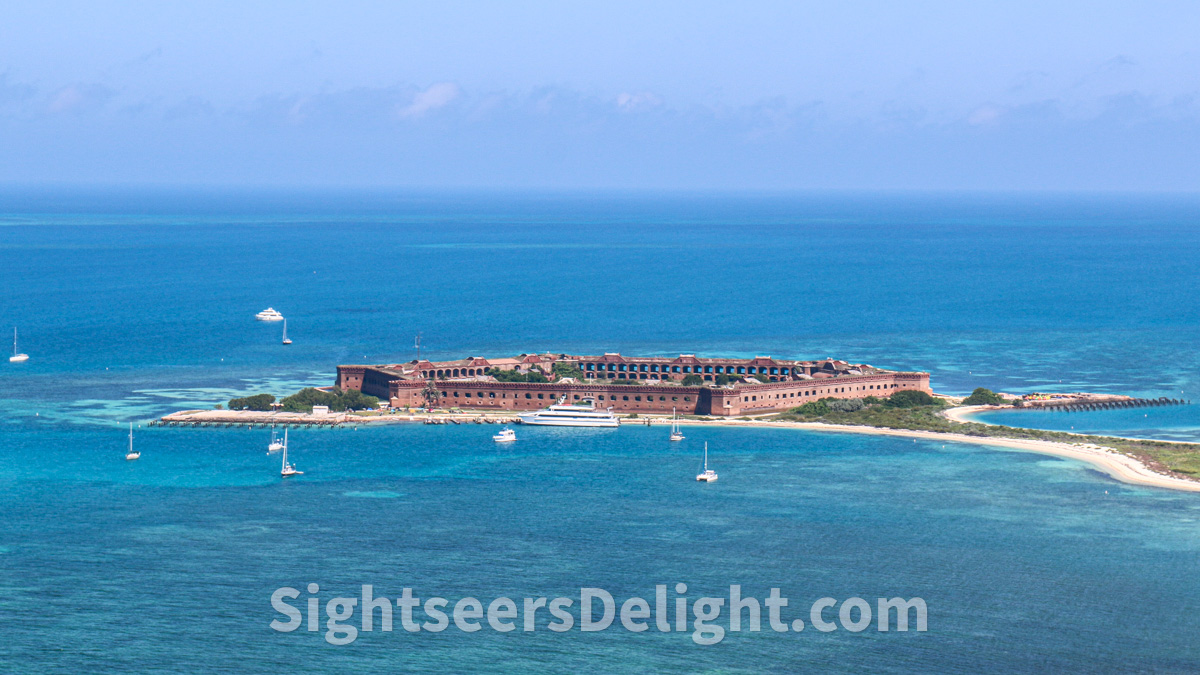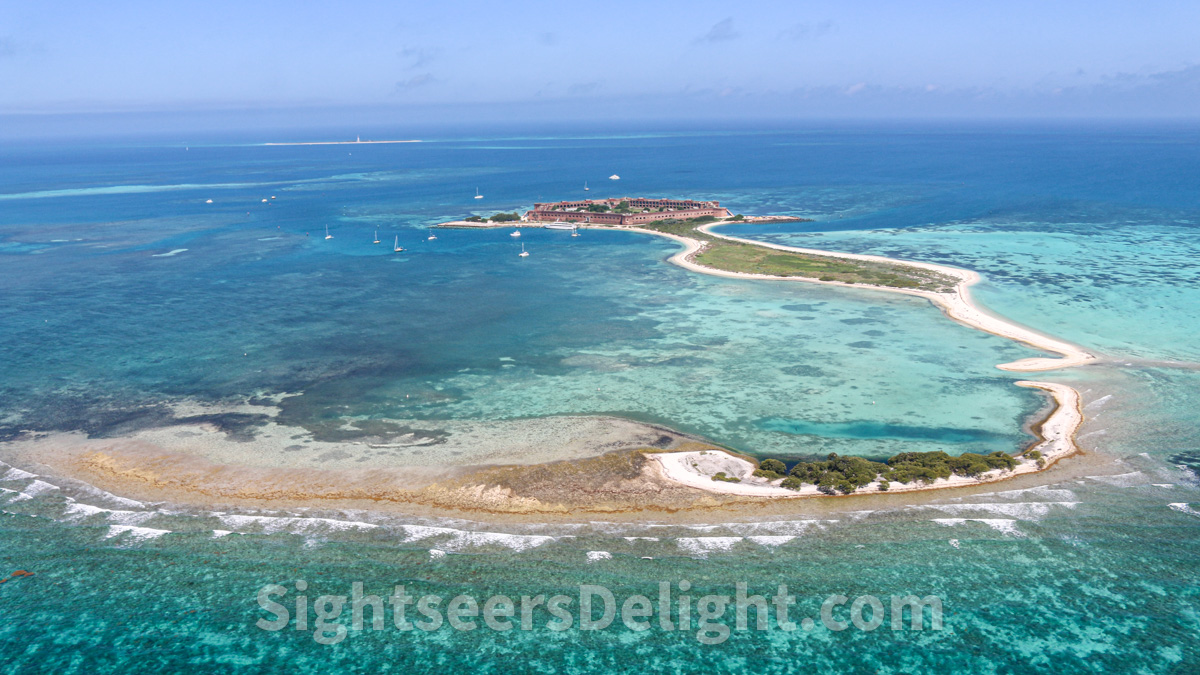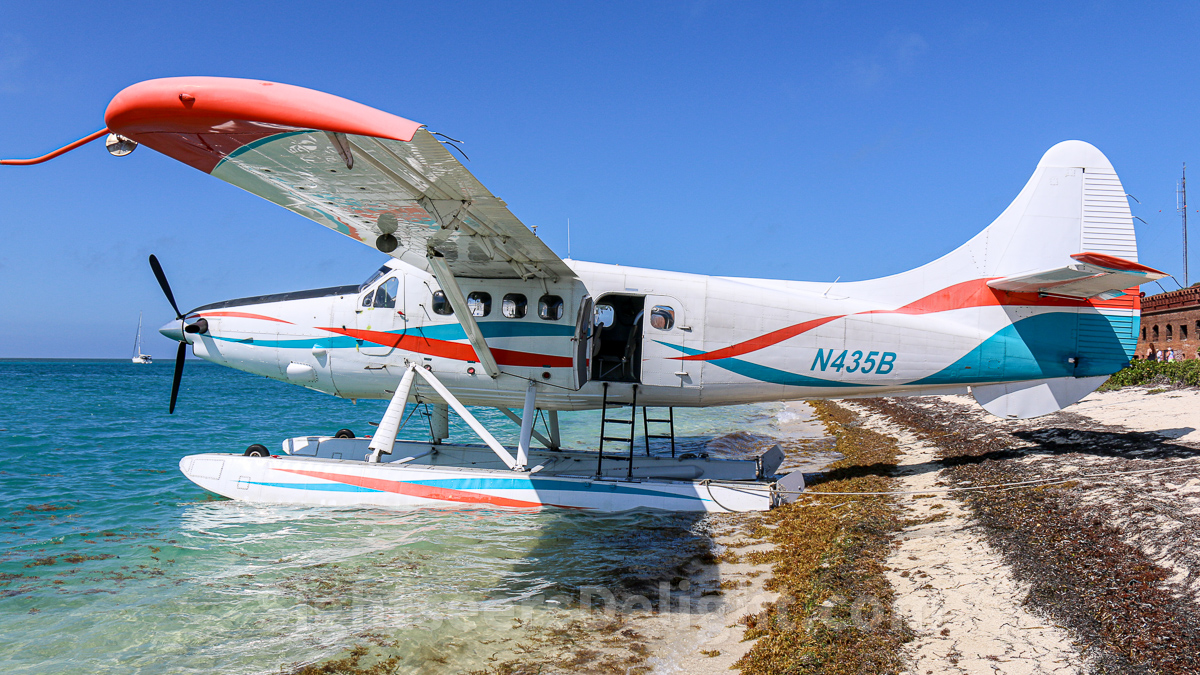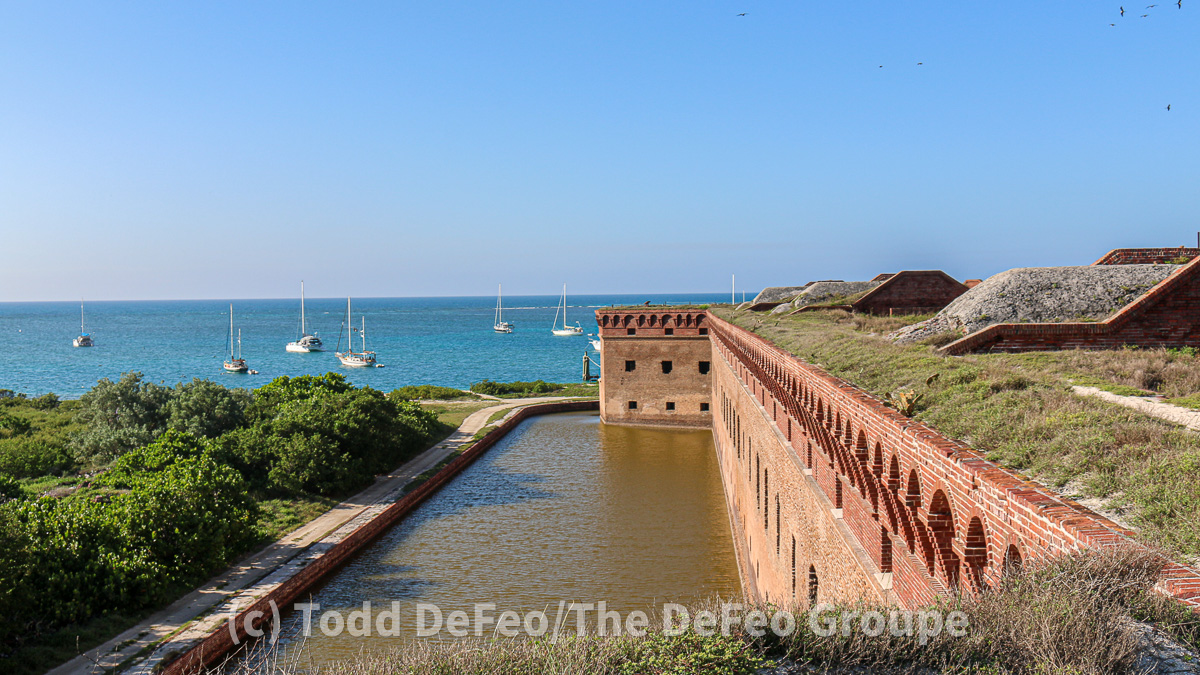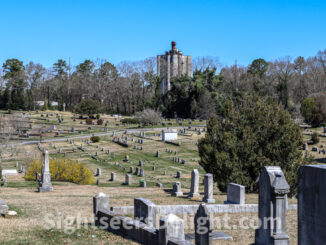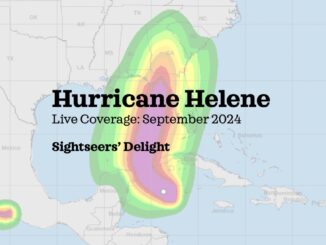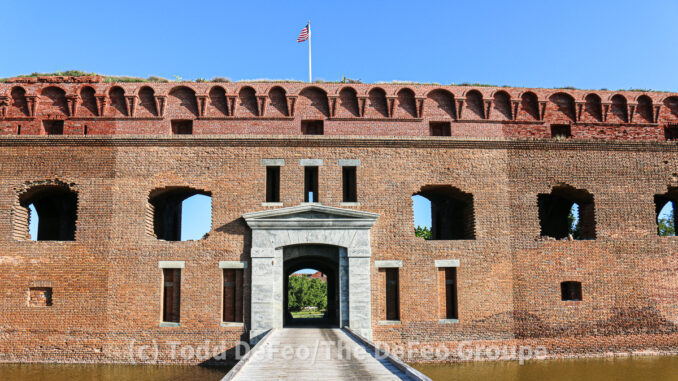
It’s just 68 miles west of Key West, but Fort Jefferson feels like a million miles away.
The massive historical structure, standing on Dry Tortugas’ Garden Key in the middle of the Gulf of America’s (or Mexico’s) shallow, turquoise waters, is among the country’s most fascinating and remote landmarks.
With more than 16 million bricks, Fort Jefferson, named after the third president of the United States, is the largest brick masonry structure in the Western Hemisphere, covering 11 acres.
Spanish explorer Juan Ponce de León explored Dry Tortugas in 1513. Years later, in late December 1824 and early January 1825, U.S. Navy Commodore David Porter inspected the area.
While he hoped to find a site for a naval station that would help suppress Caribbean piracy, he informed the secretary of the Navy that Dry Tortugas was not suitable for such a facility. However, a lighthouse was built on Garden Key.
Two decades later, on Sep. 17, 1845, President James K. Polk signed an executive order establishing a military reservation at Dry Tortugas. The goal was to safeguard the Gulf Coast and vital shipping routes.
Army engineers selected the 16-acre Garden Key for the installation, designing a six-sided, three-tiered fortification that would rise 50 feet above the sea and house 450 cannons and 1,500 troops.
Construction began in December 1846, with slaves, military prisoners, and Army regulars performing much of the work. Materials were shipped from across the country and transported to the island, and navigating the shallow, treacherous waters around the Keys added a layer of complexity to the construction logistics.
Additionally, the project faced numerous setbacks, including funding shortages, hurricanes, and disease.
Its foundations extended five feet below sea level in some places, and its walls were 10 feet at the base and narrowed to eight feet at the top. The fort’s tremendous weight caused it to settle into the soft sand.
During and after the Civil War, the United States government used Fort Jefferson as a prison for military deserters and convicts, mainly from Union forces. Among the fort’s prisoners was Dr. Samuel A. Mudd, who was sentenced to life in prison for his role in the 1865 assassination of President Abraham Lincoln.
Mudd and three other conspirators arrived in July 1865, and Mudd lived in several locations over the next four years. He was imprisoned above the sally port for most of his sentence and spent time in “the dungeon” after trying to escape.
However, after the fort’s chief surgeon, Dr. Joseph Smith, and four nurses died from yellow fever, Mudd helped treat many victims and increased overall morale at the fort. President Andrew Johnson pardoned Mudd in 1869.
While much of the fort was built by the 1870s, the original vision was never fully realized and rendered obsolete following the advent of the rifled cannon. It was abandoned by about 1874.
In 1882, the Navy took over and added a coaling station for steamships, though it was rarely used. The Treasury and Agriculture departments later assumed control but didn’t make significant changes.
In January 1935, President Franklin D. Roosevelt designated Fort Jefferson as a National Monument, marking a new chapter for the venerable fort. Instead of prisoners, it would welcome tourists.
Today, visitors can take a ferry or a seaplane from Key West to the remote island. Once on-site, they can explore the fort’s massive walls, walk on its ramparts and imagine the lives of those who built and served in this remote outpost.
Heartier souls can spend the night far away from the modern world.

